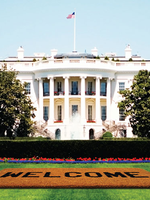
Encouraging and Sustaining Innovation in Government for the New Administration (Part II)

Earlier this year, the IBM Center for The Business of Government and the Partnership for Public Service co-hosted a roundtable on innovation. The focus was how the next administration can use innovation to support the achievement of their priorities, how new agency leaders drive and sustain innovation, and how to enhance customer experience, and support empowerment of citizens and businesses.
Blog Co-Author: Alan Howze
Part I of this blog described challenges to innovation. In this blog, we present key ideas, findings and recommendations that emerged from the discussion.
Improving Efficiency and Effectiveness
- Make innovation a key expectation of every agency leader – career and political.
- Use innovation in contracting.
- Allow vendors to bring ideas into RFPs and to bring a forward looking perspective – not just responding to where an agency is today but where they are heading.
- Include innovation as an element of RFPs.
- Use contracts that promote collaboration between government and industry around innovation.
- Create centers of excellence for operational improvement.
- Expand the use of machine learning to free up people to solve problems.
- Utilize the power of analytics – not only to provide innovative solutions – but to identify areas of focus for innovation.
- Use data to measure improved performance from innovation.
Customer Experience
- Make customer experience a priority for agency leadership in carrying out the agency’s mission.
- Create streamlined service for sharing and integrating data and using predictive analytics.
- Empower employees to improve the customer experience.
- Identify opportunities for the auto-delivery of services.
- For example, within the IRS, there could be opportunities to allow customers to download additional forms based on reported income level. However, there are privacy concerns and legal barriers with sharing tax information between agencies.
- Shift incentive structure away from staffing of offices to delivering better service.
- Incoming leaders need to quickly understand the contract landscape as it can be a barrier or solution to customer service goals.
- Alter performance plans to measure SES performance by customer satisfaction.
- Create a customer service office within agencies.
- Include incentives for innovation into state and local grants for services.
- Identify the 10-20 most public-facing agencies in government and focus on improving them first.
Customer Empowerment
- Set a leadership tone in organizations by celebrating successes in better engagement.
- Move beyond engagement as a “check the box” exercise to a way to get closer to customers and understand pain points.
- Create a strong link between engagement, user experience, and agency mission.
- Tackle regulatory barriers and inflexibilities that make it difficult for customers to engage with agencies.
- Pull together and share engagement best practices across agencies.
Innovation Goals and Governance
- Set clear goals around outcomes.
- Create chief innovation officer role to set long-term goals and delegate short-term projects.
- Create a White House office of Transformation and appropriate a $100-200 million fund available for best innovative ideas.
- Ground innovation in evidence-based approaches.
- Create a “what works” clearinghouse with successful innovations.
- Focus on audience research and observations to align innovation to real customer needs.
- Use one-year rotations for focused innovation – could be part of SES rotation program.
- Reinvent relationship of oversight community to promote & support innovation – move from “gotcha” to helping.
- Agencies need a strategic plan for innovation.
Enablers—Getting it Done in Government
- Apply a net-centric mentality – with institutions that are transparent and easy to plug into; networks that are multi-directional; and standardization of infrastructure and a language.
- Create a “Tinder” for government – a way to match people better with the skills and needs of organizations.
- Establish a structure for innovation – name initiatives, designate accountable leaders, develop bottoms-up and outside-in communication channels.
- Create clear expectations around innovation for incoming appointees.
- Create a book of innovation greatest hits (successes & failures).
- Create a Peace Corps model where people come in and out of government for 1-2 year terms. Expand that model to federal employees in other agencies.
- Embed innovation in transition planning and the execution of campaign commitments.
- Be ready for a crisis – leaders can use a crisis to drive changes that would otherwise be unattainable – and at the same time drive real innovation in the delivery of services
Innovation can be a critical tool for the next administration to achieve presidential priorities and improve government operations. The transition teams can accelerate these efforts by thinking strategically about how to implement an innovation agenda – within agencies and through government-wide initiatives. The transition team can also make innovation a priority in the selection of appointees and in providing clear marching orders. By building upon progress that has been made and effectively utilizing the tools and levers in the federal government, the next administration can drive a new wave of government innovation.



